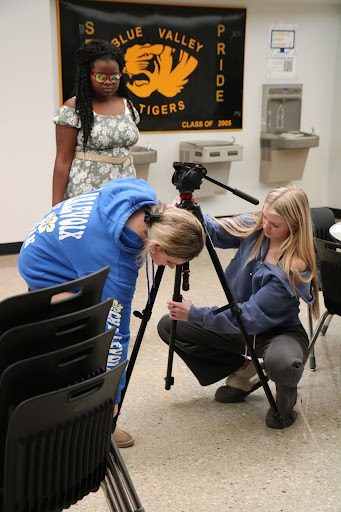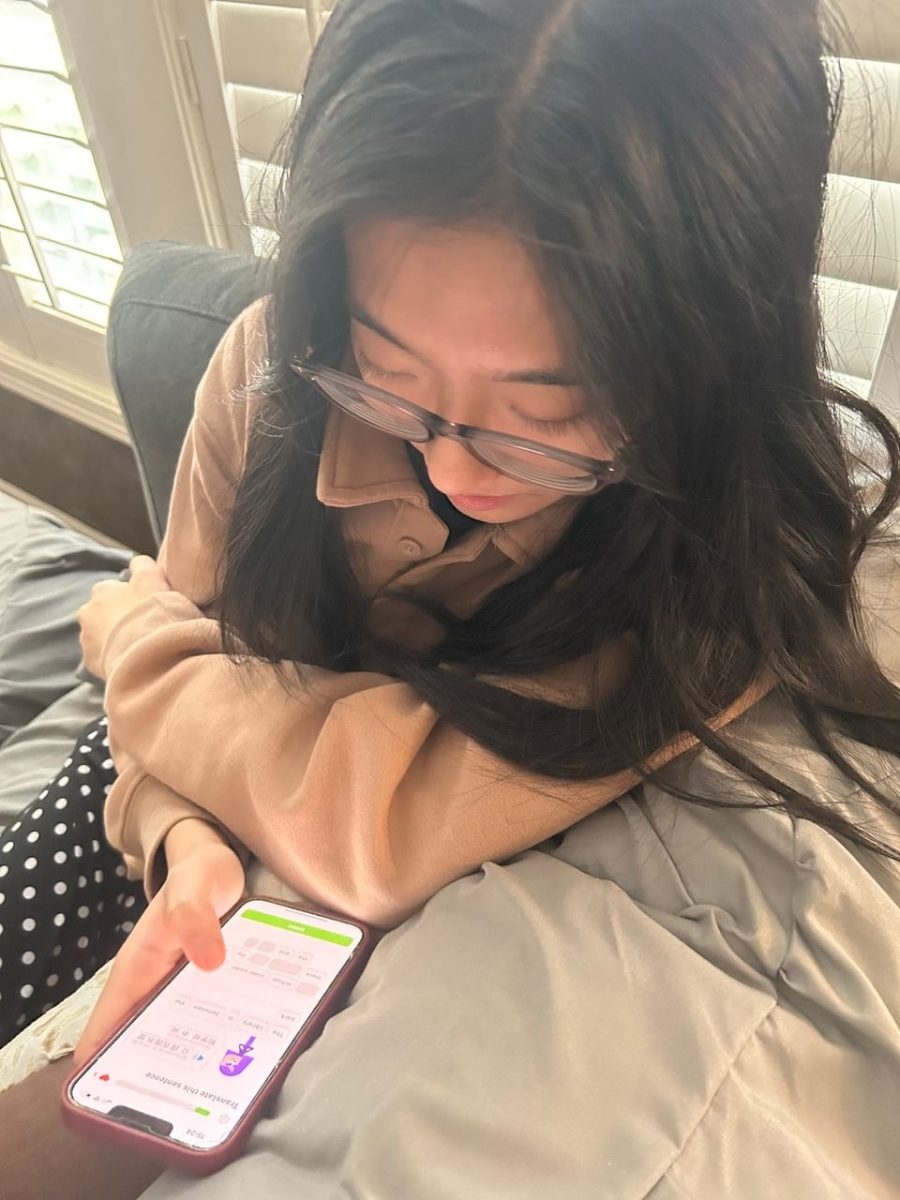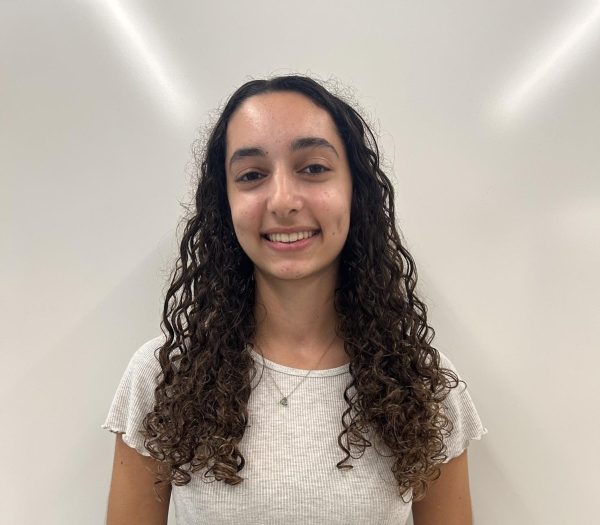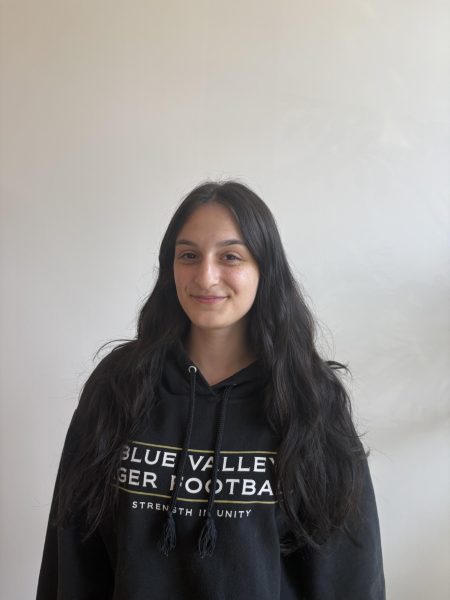Students share benefits of flipped learning classrooms.
Broadcasting Learning
Educator shares experience using innovative technology for class
 Once a month, BV students sit and watch Blue Valley High’s entertainment channel, “Tiger TV”. “Tiger TV” started in 2019 as a club and later grew with students’ interests, becoming a well-loved class at the school.
Once a month, BV students sit and watch Blue Valley High’s entertainment channel, “Tiger TV”. “Tiger TV” started in 2019 as a club and later grew with students’ interests, becoming a well-loved class at the school.
Broadcasting teacher Andrew Reeves, who leads the class, uses a diverse range of technology in the classroom that helps him make the show happen.
“The main technology is computers, but we also use editing software, lighting equipment, background equipment, camera equipment, lenses, [and] cameras,” Reeves said. “Without technology, we can’t do our show.”
Throughout the years, technology has improved and changed around schools. As the integration of technology continues to rise, classes like “Tiger TV” are especially impacted as it can be difficult to get used to this new technology.
“It impacts the way we do things. When things are new, it can be paralyzing for a lot [of students] because you don’t know how to use it,” he said. “It can be paralyzing until you get comfortable with the technology and it allows you to be more creative, to tell stories in more unique ways.”
Although new technology can be difficult, it can also enhance the way teachers and students communicate and how collaboration works in the classroom.
“With new equipment in the classroom, it leads to kids having to work together and enhancing their communication skills,” Reeves said. “As far as working together and teaching each other’s opinions on things, I think it’s like a different style of communication.”
Reeves is very appreciative of having technology in his classroom that helps him teach his students.
“In some classes, technology allows for things like [when] you’re not a good reader, and you’re better at learning by listening, then here’s the textbook or a tape — but I don’t do that,” Reeves said. “I’m fortunate to have the technology to allow my students to learn with their hands and learn by doing, and I think that’s great.”
Window to the World
Senior dedicates time to language-learning app
Due to the rising popularity of technology in schools for educational purposes, there have consequently been unique ways electronics are being used outside the classroom as well. This is especially true for senior Catherine Li, who has been using a language-learning app called Duolingo for more than five years.
“I started learning Spanish so I could catch up with my Spanish class [in school],” Li said. “Then, I tried Chinese [since I am Chinese]. I [also] recently started learning German because I thought it’d be cool to learn a completely new language.”
Duolingo offers over 40 languages in its free program, all of which include interactive lessons and quizzes that ensure users are learning a wide range of vocabulary and grammar. The easy accessibility of this app allows anyone with technology to grow their knowledge, communicate better with others, and learn how to read texts in their untranslated form.
“I started learning German on there mainly to learn about my favorite poem, Erl-King by Johann Wolfgang von Goethe,” she said.
Li has been using Duolingo every single day since eighth grade, leading to a nearly 2000-day streak. Since the app measures a user’s streak, or the number of how many days in a row they use the app, it holds them accountable and incentivizes continued education.
This simple and straightforward method of learning can be effective in many cases. However, some language courses are better made than others. While some may include various styles of learning like listening, reading, and writing, others lack in that area.
“I’m actually done with Chinese Duolingo and that took me four days. I’m really good at listening and Chinese Duolingo only tests listening,” Li said. “I don’t necessarily need to know the words — I just listen to them and then process the words in translation.”
This, along with other factors, leads Li to believe that Duolingo isn’t a better alternative to a traditional classroom.
“I don’t think Duolingo or any language-learning factor can ever replace being in a language class,” she said. “There are certain things you pick up in class since people don’t speak like robots. They speak really fast, talk really slow, and sometimes teachers put on speaking [videos] where you can’t understand and have to think in terms of different conjugations. You have to practice speaking, and you can’t do that with a robot.”
Despite this, using an app like Duolingo can help increase comprehension and knowledge in situations where someone is unable to learn it in a classroom setting or wants less commitment.
“I feel like technology can expose you to things that you wouldn’t learn in school. Like [Blue Valley High] doesn’t have German, and Chinese is only available at certain high schools,” Li said. “Duolingo offers good practices, especially for [unlearned] vocabulary. The quality may be marginal compared to what you get in the classroom. But, if you want to learn something that’s not offered at school, technology is a wonderful way to do it.”
The Ultimate Distraction
Student explains benefits, disadvantages to having technology in school
 Digital life is imperative to education today. The use of computers, smartboards, and cell phones contributes to a multitude of advantages — but with gains, come pains.
Digital life is imperative to education today. The use of computers, smartboards, and cell phones contributes to a multitude of advantages — but with gains, come pains.
“[I’m disengaged in school] probably half of the time because of all [of the technology] distractions and my friends,” freshman Penelope Ciminieri said.
Technology can both be useful and detrimental in school settings.
“You can write papers faster and [the internet] helps you get research easier,” she said. “[But when we are working on our computers] and are supposed to be doing one thing, a lot of people just do another thing.”
These other things include gaming, binging shows, or working on other classes. Out of 177 BV students, 22% play Wordle as their go-to distraction game, 18% play Papa’s Franchises and, along with 12%, Ciminieri said “2048 Cupcakes [is my distraction game.]”
Another factor that makes technology use in school controversial is blue light exposure.
“We type [and] research in most classes,” Ciminieri said. “Sometimes my head hurts from looking at the screen a lot.”
Furthermore, Blue Valley has had an ongoing debate about the use of phone caddies. These are slots for students to place their phones away from their person from bell to bell.
“I don’t really like [the phone caddies] because I like having my phone on me,” she said. “But it’s probably good to have a break.”
Although 62% of students say that caddies are harmful, Ciminieri believes the opposite is true. However, she said it can be irritating when only some teachers enforce the caddy system.
“It’s annoying when friends [in other classes] are on their phones and I don’t have it,” she said.
The use of technology is prominent in education and students say they don’t know what school would be like without access to the internet. Nonetheless, with devices such as phones and laptops, students can get distracted easily and see damage to their health.
“I don’t know what school would be like without technology,” Ciminieri said.









